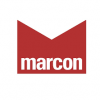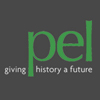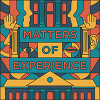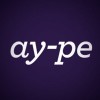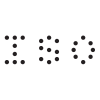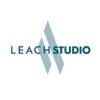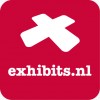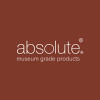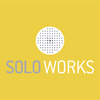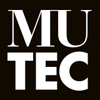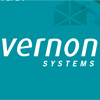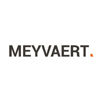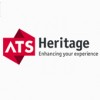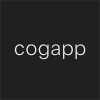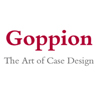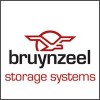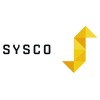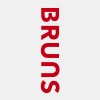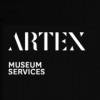
Hannah Fox of Derby Museums on developing a co-production approach that enables citizen makers and curators to get hands-on
For many years, Derby’s Industrial Museum, housed in the city’s historic Silk Mill, had been a staple day out for visitors and city-dwellers, lured by its collection of aero engines and items reflecting Derby’s textile, railway and manufacturing industries.
Opened in 1974, it was one of the city’s most treasured venues, but eventually became something of a museum piece itself. Little in terms of exhibits and presentation changed from year to year and consequently, visitor numbers declined. Moreover, in 2007, a major application for funding that would have re-invigorated it failed.
In 2011, Derby City Council, which owned the building, took the decision to close the doors and mothball the collection ahead of a funding crisis. If the Silk Mill was ever to open again, it would have to be for a purpose beyond that which it was being used for.
This is where I came in as a consultant, with a brief to re-invent the ground floor space. The task to preserve and promote Derby’s museum collection was soon to be handed over to the Derby Museums Trust, a charitable organisation whose first task on formation would be to re-open the Silk Mill, which we wanted to establish as somewhere celebrating science, technology engineering and manufacturing.
We did not want to just showcase the city’s past, we wanted to encourage visitors to be creative and explore thinking, making and innovating – the qualities that built modern-day Derby.
“We quickly recognised our creative limitations and this re-enforced a growing belief that we should co-produce the museum”
We recognised that the Silk Mill’s greatest asset was the building itself. Although the current building only dates back 100 years, it replaced what is considered to be the world’s first factory. This provided a fantastic selling point and once we removed many of the exhibits – including around 16 aero engines – we were left with a wonderful open and airy space.
Our next step was to ask people what they really wanted to see and do. Over one weekend we invited visitors to share their ideas and their responses were ambitious and varied, including a cafe, a space for engineering events, science, creative activities, a concept called “Silk Mill Modern” – even for it to be used as a live music and festival venue.
We quickly recognised our creative limitations if we were going to realise these ambitions and this re-enforced a growing belief that we should “co-produce” the museum with Derby people. Our inspiration was the American Maker movement, which promotes learning through doing in a social environment, while maker culture emphasises informal, networked, peer-led and shared learning motivated by fun and self-fulfilment.
We set about sharing the space with as many people as we could and experimented with various events over the next few months, including the first Derby Mini Maker Faire, to the delight of the local maker groups.

It was quickly clear how much affection Derby people had for the building and how much enthusiasm there was for making. As the city which gave the world Rolls-Royce, the iconic Inter-City 125 High Speed Train and the Tomb Raider computer games, Derby is used to making things, but it does so with the minimum of fuss.
Dig deep and you uncover a creative city, realising that the moment it made industrial history by becoming home to the world’s first factory was just the start of the story.
City leaders now market Derby as a high-tech engineering city but by talking to its residents, we realised what potential there was for the public themselves to create a museum which celebrates the art of making. They would do this by designing everything required in a museum space, from fixtures and fittings to furniture, as well as selecting objects and telling the stories of the exhibits.
It was something that had not been tried before and to begin with we stripped back plasterwork and removed tons of asbestos to create open spaces and improved the views outside to the River Derwent, which once powered the looms and machines that spun and wove Derby’s silk.
We then appointed our first Makers in Residence, Tilt, who shared our passion for co-production. Along with our architects, Bauman Lyons, Tilt provided vital professional expertise and project management to redevelop the ground floor of the Silk Mill. But to ensure the project had true validity, we asked them to tread lightly and for the venture, which we called Re:Make, to be driven by the community.
“Participating in Re:Make had clear well-being benefits – the project was a wonderful example of adults at play”
The refurbishment complete, we built a new workshop containing a CNC machine, a laser cutter, a 3-D printer and benches with hand tools. This is equipment that members of the public would usually never get to use and making such equipment available was key to the Silk Mill’s new offering. And, as the project progressed, there was no shortage of people wanting to give it a try.
Derby’s industrial collections are considerable. The items range from tiny 18th Century porcelain figures moulds all the way up to a huge Rolls-Royce RB211 engine, which hangs in one of the halls at the Silk Mill. Inevitably the RB211 would be included somehow, but everything else was up for debate, so we held a series of object sessions at the city’s main museum and invited the public to become citizen curators.

This was very different to traditional museum practice: our curators’ knowledge was only one part of the story – the public’s perception of their local history, their interests and emotions regarding the items were relevant too.
This process allowed us to whittle down our long list and, upon moving into the space, we started the process of considering how to present the items, as well as provide the amenities people expect at a museum, including a shop, café, seating and workshop space.
Thanks to local media coverage, social media, posters, leaflets and personal recommendations, word of the project spread. We began to run workshops during the week and gradually increased the numbers of sessions, bringing in schools and local companies as well.
Some concentrated on specific projects – such as our hexpods, which are hexagonal display cases, or our string walls to divide the space – or shared their time between a number of them. We canvassed everyone’s opinions as much as possible and let them steer the process.
Over the past two years, we have attracted more than 30,000 people to more than 100 events and we have learned a great deal about the Derby public. The diversity of volunteers has been remarkable, involving many different ages, occupations and interests. We have had children and parents, retired people, people unwinding after work and students taking a break from their studies. Among them was a third year architecture student, Nicola, who was studying at the University of Derby, but wanted to let off steam by doing something creative, while another, Kwadro, heard about the project through a friend and brought his sons along.
Our volunteers have reported enjoying the chance to meet people, learn skills and play their part in the history of the Silk Mill, but we have also noticed how many of them have grown in confidence thanks to the satisfaction and achievement they have got from the project. It strikes me now that this project was a wonderful example of adults at play: an easily-accessible activity where people can come along and use their imagination, can experiment, fail and solve problems in a supportive environment.

Participating in the programme had clear well-being benefits for people and it is no surprise that parts of the programme were funded by the Happy Museum Project. Indeed, mindful that making is good for the heart as well as the soul, we worked with the University of Derby to conduct a number of psychological and clinical tests, including measuring cortisol levels for a study to see what health benefits the making sessions have had. The results are expected shortly.
The first phase of the Re:Make project is over – Tilt has come to the end of its involvement as makers in residence – but it is still a part of the offering at the Silk Mill. Two new professional makers are working on individual residencies, Seiko Kinoshita and Paul Matosic – both of whom are established artists but are expanding their practice through the process.
The workshop equipment is being used by community groups but the philosophy of co-production is now embedded within the organisation. We are currently refurbishing two Natural History galleries and the content is being developed with visitors and community groups, while the furniture is being designed and produced by our makers.
We are submitting a major funding application to spread what we have learned and achieved with Re:Make throughout the whole Silk Mill, but in the meantime, the Re:Make approach will continue and grow, as we encourage the community and a whole new generation to explore the maker within.
Hannah Fox – Project Director, Museum of Making – Derby Museums
– For the past 10 years Hannah has worked in the creative industries building a reputation for running creative projects from brand development, design, education and large scale community engagement initiatives. Prior to this Hannah worked as a designer for an advertising agency, working on award-winning national campaigns. Hannah has led the development of the co-production approach for Derby Museums, with the ‘Re:Make the Museum’ programme enabling citizen makers and curators to get hands-on in actually designing and manufacturing the fit-out for the ground floor of the Silk Mill. Hannah has also had a number of photography residencies, is a fellow of the RSA and has recently been awarded a fellowship with the National Arts Strategies Creative Communities Programme in North America.




